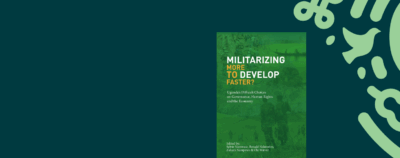Notwithstanding critical and postcolonial scholarship, there is a tendency in academia to take Euro-American experience as universal while particularizing that of global majority world. So, the dangers of Trumpism will be internationally commented upon while that of Erdoganist Muslim chauvinism or Moditva Hindu chauvinism will be read as specific to Turkey or India. This forum in The Immanent Frame challenges that.
Rather than speak of the “right,” we in this concluding essay urge all to call these projects what they actually are: the “far right.” The far right has managed to capture power, or be close to doing so, in several democracies. Right-wing politics is regressive, but it is a part of the democratic set up. The far right, by contrast, have fantasies, if not active plans, to subvert democracy and replace it with majoritarian-authoritarian rule. The far right, even when it comes to power through the electoral democratic system, is antidemocratic, for it rejects minority rights as appeasement and opposes the right to dissent.
The featured essays in this forum have analyzed the specificities of far-right Hindu nationalism in India, including its entrenched Islamophobia. They have also shown its similarities with white nationalism in the United States, Bolsonarismo in Brazil, and Erdogan-AKP’s religious-ethnic majoritarianism. They analyzed the selective appropriation of progressive terminologies including “decolonization” and indigeneity, representation of Hindutva as a defensive reaction to dangers faced by peaceful Hindus. Understanding Hindutva as similar to other forms of global far-right movements in democracies is intellectually coherent and politically useful. By drawing links, we can hope for drawing solidarities beyond national and regional contexts.
This special forum points toward the need for more scholarship on shared vocabularies of global far-right movements. Why do they adopt similar language of us and them? How do gendered constructions of Self and the Other take place? What is the role of a “charismatic leader” as well as institutional mobilization? What explains the far right’s success in representing themselves as “anti-elite” and as “the people” even as they have stronger support amongst the middle and upper classes? How do they make lethal violence banal while adopting a posture of sanctimonious morality? More research, thinking, and learning from different contexts would not only improve our understanding but allow us to better counter these dehumanizing movements.
How integral is misogyny to these far-right movements? Nitasha Kaul has argued for the analytic centrality of misogyny in legitimating the political goals and regimes of the far right in India, Turkey, the United States, Brazil, and the Philippines. Dibyesh Anand has put forward the idea of Hindutva as porno-nationalism with violent masculinist fantasies of the “Muslim Other.” While the contributors to this forum often touched upon gender, we may need another series to explicitly analyze how gender intersects with Hindutva and other far-right movements.
Narendra Modi is not India’s Donald Trump. If anything, Trump could be seen as the Modi of the United States. Erdogan-AKP’s approach toward Turkification is not a lesson learnt from contemporary European far-right movements but an Islamist reincarnation of Kemalist nation-state building of modern Turkey as secular-yet-solely Muslim. The white nationalism that Trump scavenges upon long predates Trump’s political career but so does Hindu nationalism.
In fact, there is something that makes Modi and Hindutva a more formidable force than many similar far-right movements in the world: Hindutva has a strong institutional backbone—the RSS (Rashtriya Swayamsevak Sangh)-led family of far-right organizations (Sangh Parivar). Hindutva is not dependent on a single leader. RSS is almost a century old. While claiming to be a mere cultural movement that aims to make Bharath/India into a “self-confident, resurgent and mighty nation,” it has been relentless in its majoritarian project of demonizing Muslims, Christians, communists, and secularists as enemies of India and in working towards transforming India into a Hindu nation-state. While in India the Sangh Parivar claims to be nationalist and not religious/sectarian, outside India they openly act as “Hindu.”
Hindutva, like most far-right political movements, represents itself as a defensive reaction to hostile forces misusing the inherent naivety, tolerance, and generosity of the majority community. Violence is justified as counter-violence; violence against the Other is celebrated as an ennobling and moral force. At the core of all the far-right nationalist movements flourishing in different parts of the world is the valorization of the majoritarian masculinist Self and dehumanization of all those who are Othered.
A primary tool through which the proponents of Hindutva mobilize the desires of the majoritarian community in India is fear. Hindutva portrays itself as a movement that makes majority Hindus secure by identifying inimical forces, awakening the majority population to these dangers, marginalizing, controlling, expelling and/or exterminating the enemies through violence, and bringing pride to the hitherto passive Hindu nation. A study of Hindutva is a study of the extensive use of representations and stereotypes to generate forms of identity politics that is majoritarian and violent while holding onto an imagination of the Self as tolerant, democratic, and accommodating.
Since 2014, under Narendra Modi’s prime ministership, various long standing demands of Sangh Parivar are being implemented. There has been a successful politics of mythmaking with Modi’s leadership being seen as a “Hindutva-Development” mix. Major political transformations taking place, including the erasure of the de jure autonomous statehood of Kashmir and the building of Ram temple in Ayodhya, are not shocking, for they have always been in the manifesto of the BJP. Attacks on religious minorities, progressives, critical voices, and other individuals and groups that reject the Hindutva vision for India cannot be explained as electoral shenanigans; these go beyond election campaign periods and can now be seen in various parts of the country. India under Modi has transcended the episodic “institutionalized riot system” that Paul Brass referred to. Hindutva has now become dominant across all spheres of public life—not yet hegemonic, but certainly dominant and with little chance of electoral defeat at the national level. In the contested space of Kashmir, the primary aim is to colonize using the rhetoric of development. For India, the goal of Hindutva’s proponents is to shift the common-public sense from pluralist, messy, part secular, part not-so-secular nationalism to a “clean” and “pure” Hindu nation.
Within fascism, the language of “cleanliness” in a society can easily become the language of “cleansing” the society of those who bring dirt and pollution. Safai, cleanliness, and Safaya, cleansing, can go hand in hand. Shiv Visvanathan points to the lethal effects of BJP’s project of “civic cleansing.” When Erdogan speaks of purifying the Turkish nation by defeating “white Turks,” “terrorist Kurds,” “feminists,” and “LGBTQs” and protecting the “Islamic family,” he legitimizes the “cleansing” of opponents in the name of cleaning up the society. Hindutva is no different. Genocidal desires of “cleansing” are integral to the project of constructing a Hindu nation-state.
It is tempting to see neoliberalism and far-right nationalism as either distinct (with the former a modernizing force and the latter a revanchist archaic phenomenon) or as simplistically related with far-right nationalism being a product of neoliberalism. But it is more fruitful to understand some of them as, what Kaul conceptualises as “postcolonial neoliberal nationalism” (PNN). She writes that, “the successes of the contemporary Right owe significantly to how they deploy both neoliberalism and nationalism as part of the same technique of governmentality, which is rooted in the appeal to a constructed postcolonial sentiment in the way in which it ties the rising power status to aspirations historically denied by the West.”
The constitutive links between neoliberalism, nationalism, and development do raise a question for us all. Does this concatenation of violence have a uniquely far-right provenance? Take the example of China, a Communist Party-ruled state, that has rampant Han chauvinism, and where Uyghurs and Tibetans are occupied, minoritized, exoticized, and suppressed, while any criticism of the Party is seen as anti-national. Would we include Han chauvinism and China as one of the many examples of the global far right or would we excuse them as irrelevant? The present essay does not offer us a space to have a full discussion of this, but we mention the topic as a note of caution. Rather than be driven by pre-set ideological animus, scholarship must call out injustices and dehumanizations regardless of the “color” of the political movement.
As we read the essays by our fellow scholars, and agreed with what they highlighted, we also found a certain “American-academia-centrism.” Our professional, personal, and intellectual locations often shape what we see as most urgent. While Brazil, Turkey, the Philippines, and other countries are mentioned, the primary focus in most essays is on Hindutva, India, the United States, white nationalism in the United States, and Hindutva also in the United States. Do we have similar trajectories of growth of Hindutva within the Hinduized Indian diaspora in Canada or the United Kingdom or East Africa or the Gulf? Or is what we are discussing US-specific? Is the mobilization of the Hindu far right in the United States any different from that of other religious-minoritized diasporic populations deriving pride from their associations with homeland?
Religious and ethnic chauvinisms, when they capture society and the state, kill. Hindutva and white nationalism are not uniquely lethal. Other religious and/or ethnic chauvinisms, when they are majoritarian and influence or capture the state, are no less dangerous. Hence, a comprehensive study of the global far right, which in practice is mostly a study of different nation-based far-right movements, has to be more critical and comparative than what can be afforded in one forum. We see this conversation not as a conclusion but as a beginning.
We invite readers to join us in thinking through the challenges to democracy and humanity that contemporary nationalist far-right movements, of which Hindutva is one stark example, pose. Thinking is not doing, but without critical thinking, there would be no undoing of the dehumanizing far-right projects.













